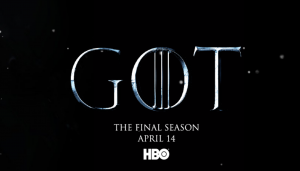If there are three things I love, they’re the smell of coffee, a hot bath after a long day, and watching attractive people be brutally murdered in sequential order. Before you ask, you aren’t on the same campus as a beauty-abhorring psychopath, but a slasher movie fanatic. In the existentially draining chaos of this world, I find comfort in the predictability of this particular genre of horror. But the more I indulge in these films, the more I realize they offer something beyond momentary escape. Slasher movies are in many ways reflections of the sexual and social attitudes of the society that produce them. With the resurgence of these films in the last few years, we should be wary of the subliminal diffusion of their underlying ideologies into our current media.
Theses movies always follow the same formula: A masked killer with a blunt instrument targets a group of teenagers—typically composed of a jock, a burnout, a cheerleader, and a nerdy girl—and kills them off in that order. However, the nerdy girl (who somehow looks like Margot Robbie after taking off her glasses) uses her pragmatism and righteousness to exterminate the big baddie. The day is saved! That is, until they make a sequel. It never occurred to me to question the recipe of slasher films until I started noticing patterns that weren’t necessary to the plot. For some reason, even with a “strong female protagonist,” these movies don’t feel particularly feminist. Why is it that the cheerleader’s death is always drawn out? Why does the franchise always follow the male killer as opposed to the female protagonist? Why is the “final girl” always a virgin?
More often than not, pop culture mirrors social norms. The 1980s were undoubtedly the “Golden Age” of slasher films, birthing classics like A Nightmare on Elm Street and The Texas Chainsaw Massacre. It was also an age of conservative sexual attitudes, with 71 percent of Americans denouncing sex before marriage. Just to compare, today about 55 percent of Americans are cool with premarital sex. This could explain why the promiscuous characters in slasher films are promptly murdered, especially after engaging in sexual acts. The killer is a divine judge of sorts, punishing the amoral for their sins and awarding the virgin girls with a heroic title.
Slasher films can also be seen as a reaction to second-wave feminism, which began in the 1960s and spanned over two decades. While first-wave feminism highlighted the importance of gender equality in voting, second-wave feminism had a variety of focuses, one of which was reproductive rights. Activists advocated for access to contraception, safe abortion, and an end to the stigma around female sexuality. I interpret the popularity of slasher films as a male-dominated industry’s projection of conservative attitudes in response to the rise of these liberal sentiments.
Take the opening scene of Halloween (1978). A six-year-old Michael Myers sees his sister’s clothes scattered about the floor, obviously the aftermath of a sexual encounter. He goes into her room, where she is naked, brushing her hair. Myers stabs her to death with a knife, and her moans are almost sexual as she falls to the floor. He walks away from her nude, lifeless body, completely disregarding her male partner. The scene makes clear that the woman should be blamed and punished for her promiscuity, while her male counterpart faces no consequences. The killing is oddly erotic, in some ways a visual translation of the male desire to exert control over “sexually empowered” women. Myers’ use of a phallic object as a weapon signifies sexual domination. Furthermore, the scene is shot from Myers’ perspective, subconsciously making the viewer identify with him. The scene direction exemplifies Laura Mulvey’s feminist theory of the “male gaze,” which argues that women are represented as sexual objects in film for the pleasure of the male viewer.
Although they may be a reflection of ’80s attitudes towards sex and feminism, slasher films are making a comeback. Just in 2014, there was It Follows, The Guest, and Girlhouse, among many others. One reason may be that there is a 30-year pop culture nostalgia cycle, where trends popularized by the generation three decades ago make a comeback. This explains the popularity of ’70s fashion and music in the 2000s and the current resurgence of the ’80s. The children of the ’80s, now in their 30s, see the decade through rose-colored glasses and create art based off their perception of movies as children. Since they were not adults, they probably don’t remember how these films fetishized virginity and perpetuated misogynistic ideas.
I don’t think there is anything wrong with enjoying slasher films, and if there was, I’d be the last one to talk. However, it is important that we understand the wider implications of media, especially how it can contribute to our distinction between what’s right and wrong. The return of the slasher genre could unintentionally lead to the re-circulation of outdated values. Even things designed to entertain should be put under a degree of scrutiny by the public. In doing so, we promote not only a culture of mindful consuming, but general awareness towards existing power dynamics. This Halloween, I hope to see a few “Woke Michael Myers” costumes floating around—basically regular Michael Myers but with an “I kill everyone equally” sign.





